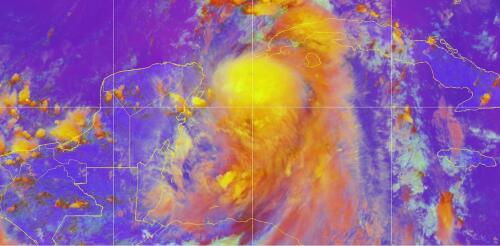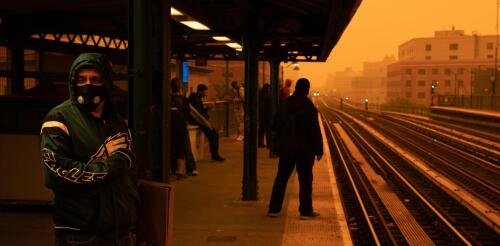environment
Forecasters expected Hurricane Idalia to intensify into a major hurricane as it headed over exceptionally warm waters in the Gulf of Mexico, on track for landfall in Florida on Wednesday, Aug. 30, 2023. Hurricane warnings were posted along a wide stretch of Florida’s Gulf coast, from near Sarasota to the Panhandle, including Tampa Bay. Hurricane scientist Haiyan Jiang of Florida International University explains how two conflicting forces – record-high ocean heat and wind shear, the latter influenced by El Niño – were determining Idalia’s future, and how they have made the 2023 hurricane season overall difficult to forecast. What role is ocean temperature playing in Idalia’s forecast? Forecasters are watching several factors, but the biggest is the very high sea surface temperature in the Gulf of Mexico. The Gulf is typically warm in late August, and we often see hurricanes this time of year. But this summer, the sea surface temperature has...
The 2022 Inflation Reduction Act, President Joe Biden’s landmark climate law, is now expected to prompt a trillion dollars in government spending to fight climate change and trillions more in private investment. But the law and Biden’s broader “buy American” agenda include measures that discriminate against imports. One year in, these policies, such as the law’s electric vehicle subsidies, appear to be succeeding at growing domestic clean energy industries – consider the US$100 billion in newly announced battery supply chain investments. But we believe the law also clearly violates international trade rules. The problem is not the crime but the cover-up. Today’s trade rules are ill-suited for the climate crisis. However, simply tearing them down could hinder economic growth and climate progress alike. If U.S. leaders instead take responsibility for forging an improved international trade system – rather than denying the violation...
Summer 2023 was the hottest on record by a huge margin. Hundreds of millions of people suffered as heat waves cooked Europe, Japan, Texas and the Southwestern U.S. Phoenix hit 110 degrees Fahrenheit (43 degrees Celsius) for a record 54 days, including a 31-day streak in July. Large parts of Canada were on fire. Lahaina, Hawaii, burned to the ground. As an atmospheric scientist, I get asked at least once a week if the wild weather we’ve been having is “caused” by climate change. This question reflects a misunderstanding of the difference between weather and climate. Consider this analogy from the world of sports: Suppose a baseball player is having a great season, and his batting average is twice what it was last year. If he hits a ball out of the park on Tuesday, we don’t ask whether he got that hit because his batting average has risen. His average has gone up because of the hits, not the other way around. Perhaps the Tuesday homer resulted from a fat...
Canada’s seemingly endless wildfires in 2023 introduced millions of people across North America to the health hazards of wildfire smoke. While Western states have contended with smoky fire seasons for years, the air quality alerts across the U.S. Midwest and Northeast this summer reached levels never seen there before. The smoke left the air so unhealthy in Philadelphia on June 7, 2023, that the Phillies-Detroit Tigers Major League Baseball game was postponed. That same week, New York City residents hunkered down indoors for several days as a smoky haze hung over the city, turning the skies orange and exposing millions of people to the worst air quality in the world. Smoke also drifted into the Midwest, triggering the highest air quality index levels in the Chicago area in at least 24 years, forcing the cancellation of numerous summer activities and leaving residents with raspy voices. In several states, people woke up to smoky skies day after day....
Images of orange groves and Spanish-themed hotels with palm tree gardens filled countless pamphlets and articles promoting Southern California and Florida in the late 19th century, promising escape from winter’s reach. This vision of an “American Italy” captured hearts and imaginations across the U.S. In it, Florida and California promised a place in the sun for industrious Americans to live the good life, with the perfect climate. But the very climates that made these semitropical playgrounds the American dream of the 20th century threaten to break their reputations in the 21st century. A postcard illustrates the latest style for Miami beach bathing around 1920. Asheville Post Card Co./Wikimedia In California, home owners now face dangerous heat waves, extended droughts that threaten the water supply, and uncontrollable wildfires. In Florida, sea level rise is worsening the risks...




